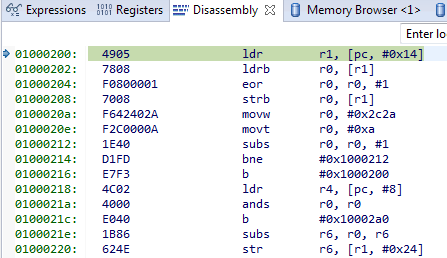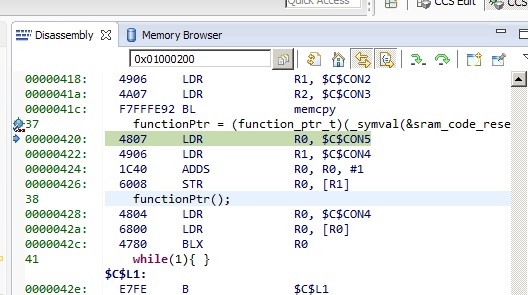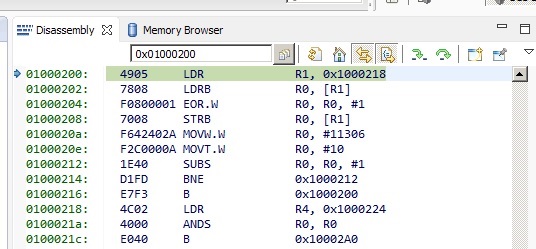I'm having a very difficult time finding out exactly how to run code from the SRAM on an MSP432. I have a function that is very small and needs to operate faster. I could be mistaken, but I believe it could run faster if it weren't running from FLASH, as there are 2 wait states on the MSP432 running at 48MHz.
I've read there are two ways of doing this:
#1 - Copy the code into SRAM, then jump to it
#2 - Put the code in the data section of the startup file, so that it is automatically loaded there by the compiler
I'd like to know how to do both, but for simplicity purposes, I'd really like to know exactly how to set up #2. Thanks!
-
Ask a related question
What is a related question?A related question is a question created from another question. When the related question is created, it will be automatically linked to the original question.





